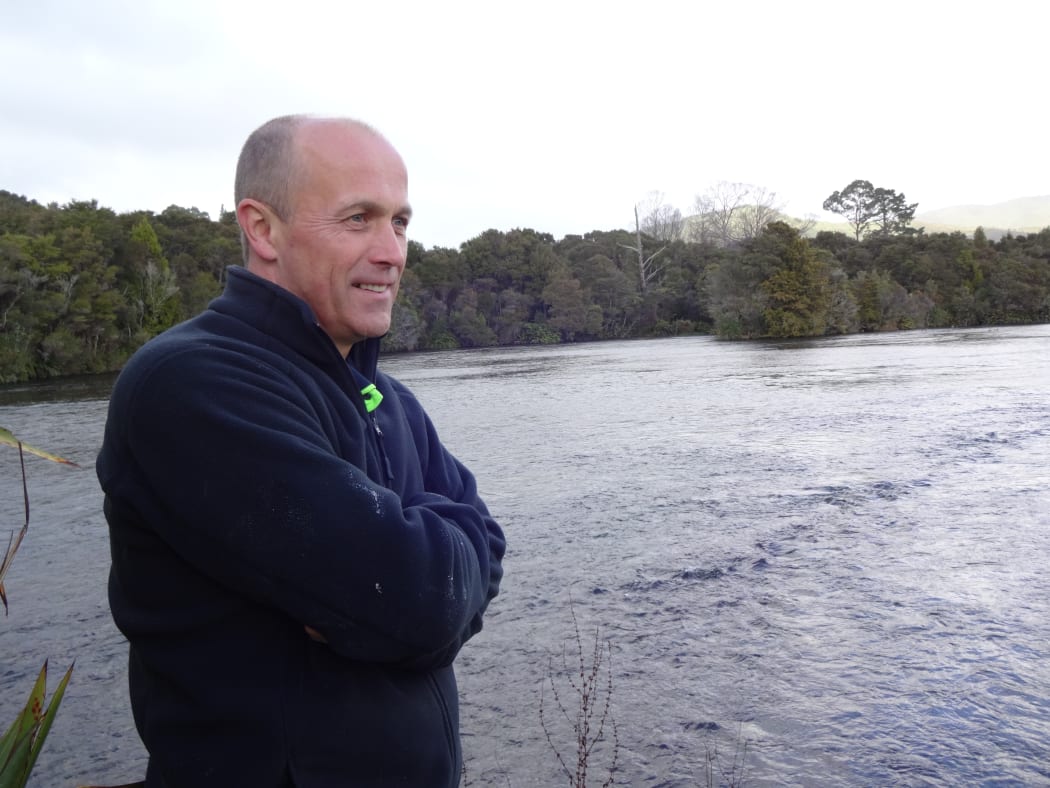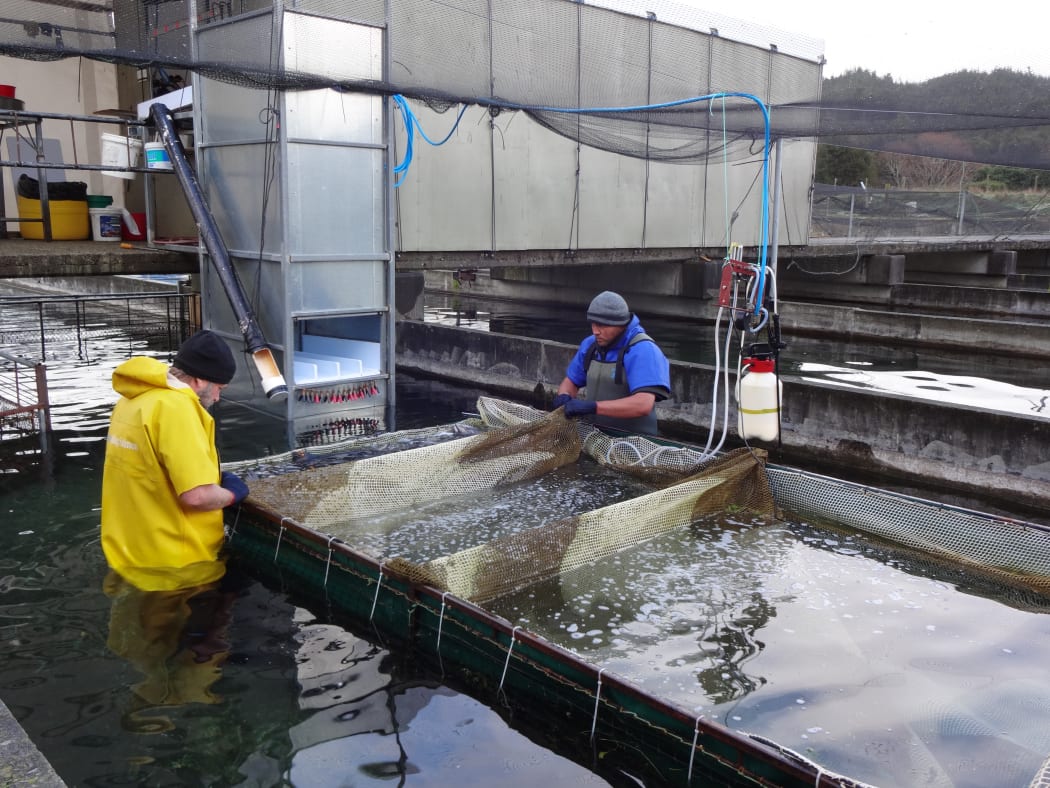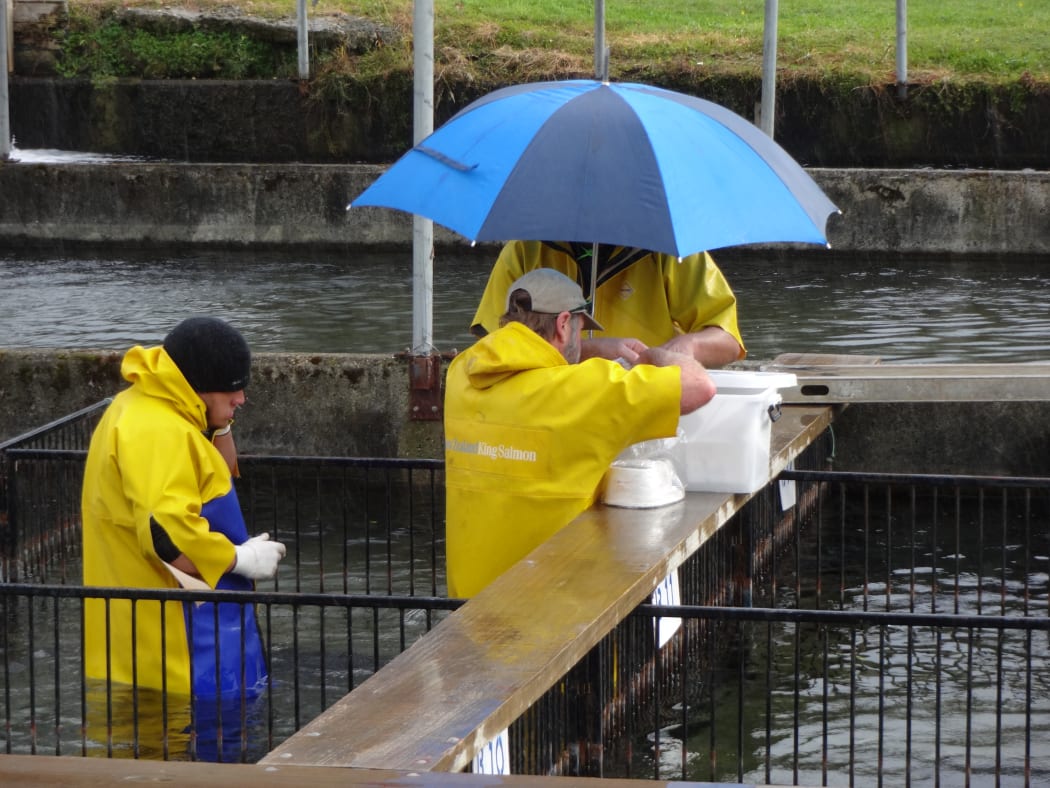By Veronika Meduna

NZ King Salmon's freshwater manager Jon Bailey overlooking Te Waikoropupu Springs, from which the salmon hatchery draws its clear and cold water. Photo: RNZ / Veronika Meduna
In the wild, salmon spend most of their lives in the ocean and return to rivers to spawn, and then die.
The largest species in the Pacific salmon family, the King salmon or Chinook, is the only one farmed in New Zealand. It was introduced from northern California as a game fish in the late 19th century, but it wasn’t until the 1980s that the first salmon farms were set up in the Marlborough Sounds.
Farmed salmon now accounts for more than a fifths of the aquaculture industry in New Zealand, which also produces green-lipped mussels and oysters, with a combined export value of $252 million.
New Zealand King Salmon freshwater manager Jon Baileys says the company’s breeding programme is based on family trees and has established seven generations of King salmon over the past two decades, which includes more than 90 distinct families, selected for traits in breeding success and product quality.
All our brood stock are kept in freshwater for their entire life. The traits we select for are growth and age of maturation, so whether they mature at three or four years of age, and then the flesh quality traits, such as fat content in flesh and the colour of the flesh.
All breeding fish are tagged and genotyped against their parent generation to avoid any inbreeding, and the breeding stock is evaluated against their siblings that are kept in seawater pens.
“That means we select fish that perform well in seawater, which is where production fish are grown. We can select the best families in freshwater and then the best fish from within those families to not only produce the eggs for production but also the next generation of brood stock.”
At its hatchery just of Takaka, the clear and cold water of Te Waikoropupu Springs supplies a constant flow to the freshwater pens where breeding fish are kept. “The reason we use this water is its clarity, which is well known. It remains clear year round regardless of the weather and the season and for farming salmon that’s just excellent because the fish can see their food all the time.”
Another constant is the water temperature, which at 11.7 degrees Celsius is in the middle of the range for freshwater salmon farming.

Female salmon ready to spawn are separated out, anaesthetised and killed before their eggs are collected. Photo: RNZ / Veronika Meduna
Mature females are separated out into tanks where they are aneasthetised and killed before their eggs are removed. At the same time, another team collects milt from males, making sure to avoid any contact with water, which would activate the sperm.
Salmon stop feeding as they reach maturation and put all their energy into producing eggs and sperm. They develop a darker skin as their scales are absorbed and transformed into a thick mucus layer. In the wild, this would be the time when they travel upstream into rivers to spawn and need a tougher skin to negotiate obstacles.

During the milt collection, staff have to keep water out to avoid activating the sperm. Photo: RNZ / Veronika Meduna
The hatchery's incubation room is a biosecure area and staff have to wear protective gear and change footwear to prevent the introduction of any pathogens. Once the eggs have been fertilised, they are rinsed with water to harden the shell and kept for a month until the fish embryo’s eye is clearly visible.
From there, the salmon spend another year in freshwater, and the juvenile fish are then transported to sea pens to mature.

The egg inspection and incubation take place in a biosecure laboratory at the hatchery. Photo: RNZ / Veronika Meduna
Earlier this year, the government announced a $5.2 million project to study the specific dietary requirements of King salmon.
Half of the money for the five-year project comes from the government through Seafood Innovations Ltd (SIL), a research partnership supported by the Ministry of Business, Innovation and Employment. The other half is being funded by commercial and research interests – New Zealand King Salmon, Danish feed producer BioMar, Nelson's Cawthron Institute and the Nelson Marlborough Institute of Technology.
Fish Health Manager for New Zealand King Salmon, Mark Preece, says the project's aim is to improve the efficiency of food use.
We are progressing towards this by firstly determining the digestibility of raw ingredients and if we find any indigestible ingredients, then removing them. Once that's done, we'll develop our 'best possible diet' and benchmark that against the commercially available diet. The primary reason for this work is that most science on diet development is carried out on Atlantic salmon. We farm Pacific salmon, so we need to know what's best for them.
He says no antibiotics or hormones are used in salmon feed, but the pigment Astaxanthin is added. "Astaxanthin is a nature-identical essential nutrient that happens to make the fish pink. It is an identical replica of the colorant found in krill and includes an antioxidant that enhances the salmon health and performance."

